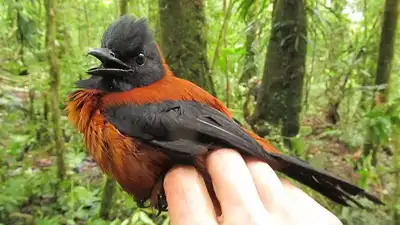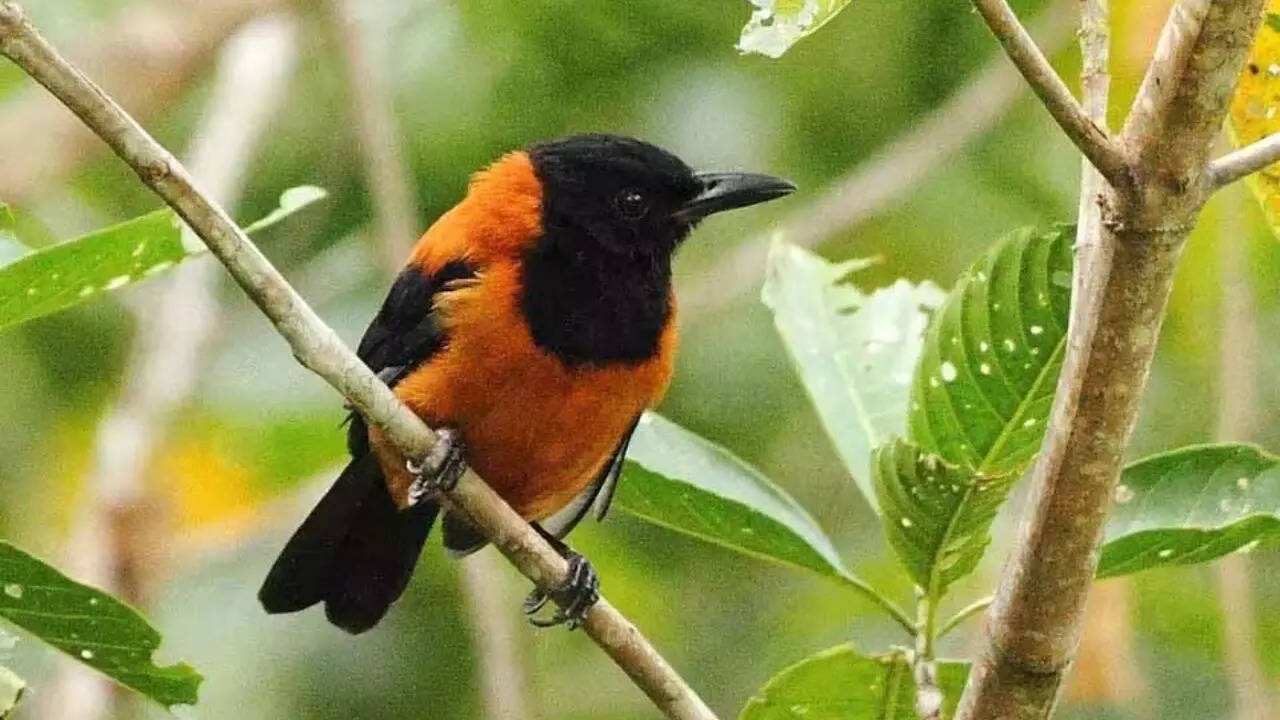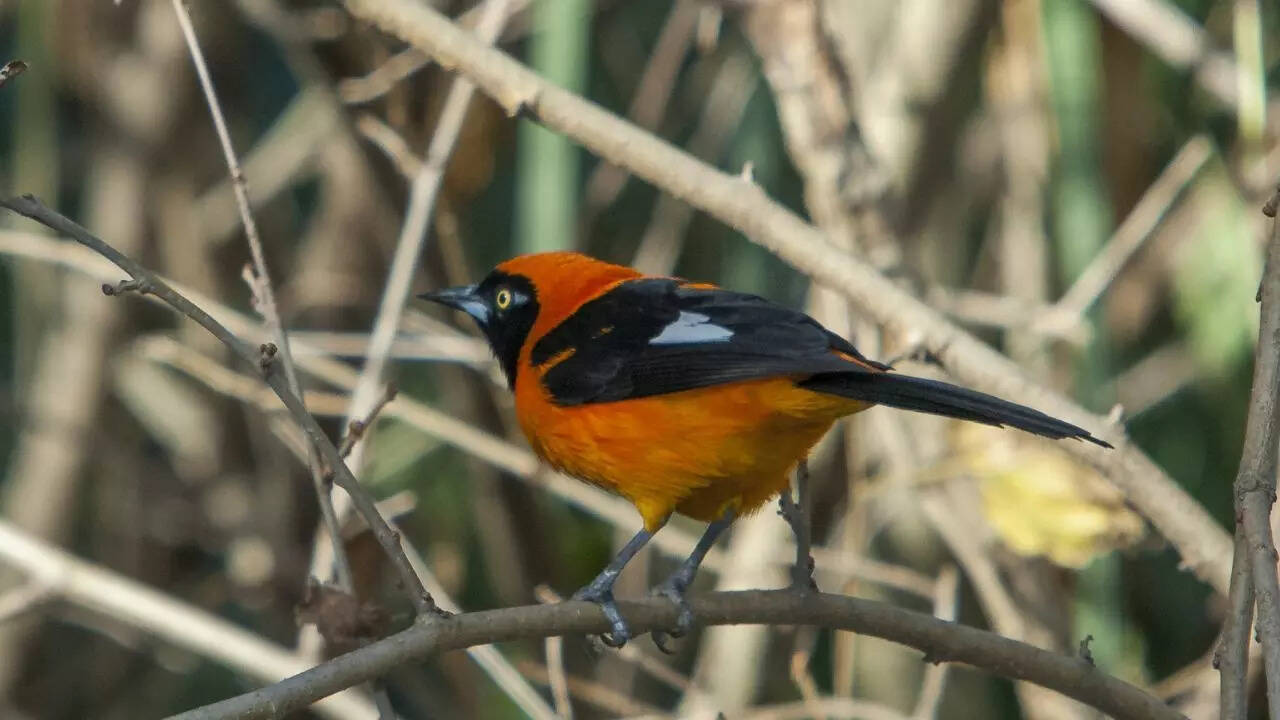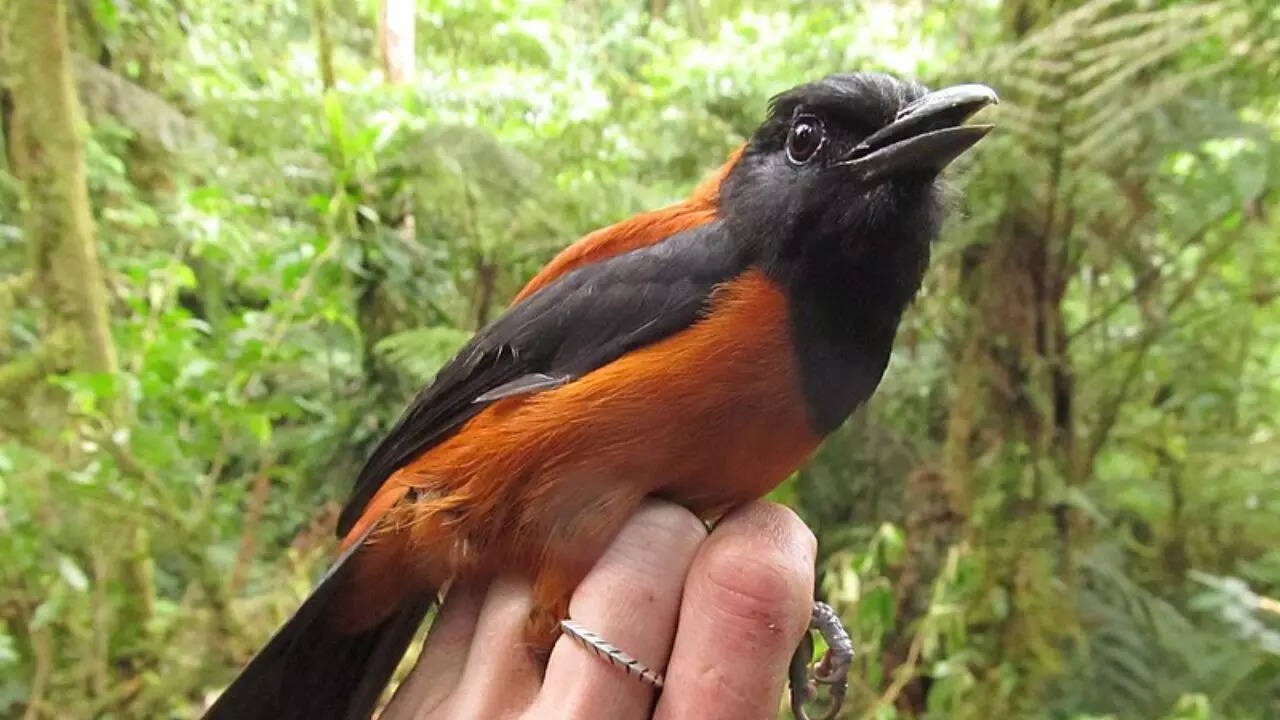ARTICLE AD BOX

When you think of birds, “toxic” is rarely the first word that comes to mind. Yet, the Hooded Pitohui (Pitohui dichrous) from New Guinea challenges that notion entirely. This striking black-and-orange bird is one of the very few species on Earth known to be poisonous.
Handling it can cause numbness, tingling, or even mild paralysis, making it both fascinating and cautionary for scientists and birdwatchers alike.The bird’s toxicity was formally documented in a 2009 study led by Dr. Jack Dumbacher, published in The Auk. The research confirmed that the Hooded Pitohui carries batrachotoxins, the same potent neurotoxins found in some poison dart frogs. These toxins accumulate in its skin and feathers, providing a natural defence against predators and parasites.
Interestingly, the bird doesn’t produce the poison itself; it acquires it through its diet, feeding on beetles from the genus Choresine that contain batrachotoxins.Bright plumage warns predators of its danger in a classic example of aposematism, while the Hooded Pitohui’s unique chemistry highlights the intricate relationships between diet, environment, and evolution.
Why the Hooded Pitohui is known as the world’s only toxic bird

Source: BioDB
The Hooded Pitohui’s skin and feathers are rich in homobatrachotoxin, a neurotoxin capable of causing numbness and tingling when touched.
Scientists discovered that these toxins act as a chemical shield, deterring predators such as snakes, birds of prey, and even mammals.Unlike venomous creatures that actively inject toxins, the Hooded Pitohui’s poison is passive; it’s embedded in its tissues.The bird acquires this toxin from its diet, particularly beetles of the Choresine genus. These beetles contain batrachotoxins, which the bird stores safely in its skin and feathers without harming itself.
This relationship between diet and chemical defence is a rare example of how species evolve to harness environmental chemicals for survival.
Aposematism in the Hooded Pitohui: Warning colours in nature

One of the most fascinating aspects of the Hooded Pitohui is its vivid black-and-orange plumage. This striking colouration isn’t just for show; it’s a warning to potential predators. Known as aposematism, this evolutionary strategy signals danger, helping the bird avoid unnecessary attacks.
Local communities in New Guinea have long known to avoid handling this species, referring to it as a “rubbish bird” because of its toxic nature.Bright warning colours are common in toxic animals, from frogs to insects. In the Hooded Pitohui, the combination of bold colouration and chemical defence makes it nearly untouchable in its habitat, allowing it to thrive despite potential threats.
Other toxic birds like the Hooded Pitohui
While the Hooded Pitohui is the most well-known example, it is not the only toxic bird.
Other species, such as the Blue-capped Ifrita and the Little Shrikethrush, also carry batrachotoxins. However, the Hooded Pitohui’s distinct plumage, size, and abundance have made it a focus of scientific research and media attention.These birds highlight the rare phenomenon of avian toxicity, which is still not fully understood. Research continues to explore how these species acquire, store, and use toxins, offering insights into ecological interactions and evolutionary biology.
Fascinating facts about the Hooded Pitohui

Source: Wikipedia
- Habitat: Rainforests of New Guinea, especially mid-montane regions.
- Diet: Beetles from the Choresine genus; occasionally other insects and fruits.
- Toxin: Homobatrachotoxin, a neurotoxin that can cause numbness and tingling.
- Purpose of toxin: Defence against predators and parasites.
- Warning signal: Bright black-and-orange plumage.
- Scientific significance: One of the few known toxic birds in the world.
Why the Hooded Pitohui matters
The Hooded Pitohui is more than just a curious species; it is a living example of nature’s ingenuity. Its survival strategy demonstrates the interplay between diet, environment, and evolution. For scientists, it provides a rare opportunity to study chemical ecology in birds. For bird enthusiasts, it’s a reminder that the natural world holds surprising adaptations that challenge what we think we know about wildlife.Studying such species also underscores the importance of conserving their habitats. New Guinea’s rainforests are under pressure from deforestation and human activity, which threatens not only the Hooded Pitohui but countless other species that rely on these ecosystems.The Hooded Pitohui remains one of the most fascinating birds on Earth. Its toxic skin, vibrant warning colours, and rare ecological adaptation make it a symbol of nature’s creativity. Observing this bird in its natural habitat offers insight into a unique survival strategy, while reminding us of the delicate balance of ecosystems.From a scientific and conservation perspective, the Hooded Pitohui is truly one of the rarest and most remarkable birds in the world.Also read| Elephants communicate with human like intentional gestures: Study



.png)
.png)
.png)
















 3 days ago
7
3 days ago
7








 English (US) ·
English (US) ·